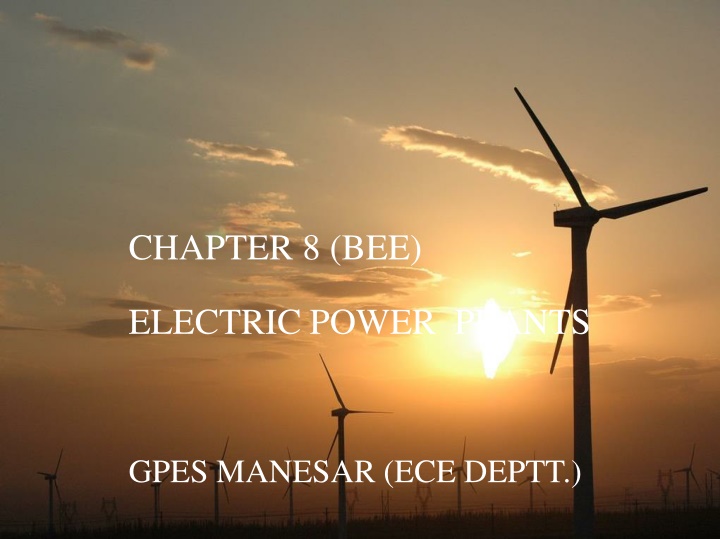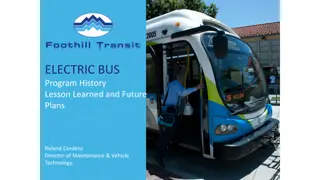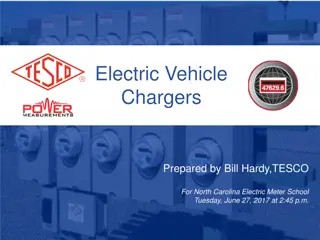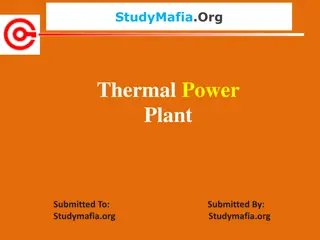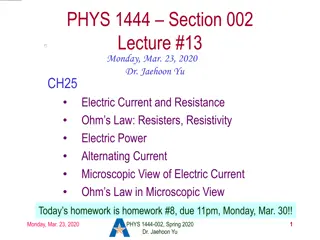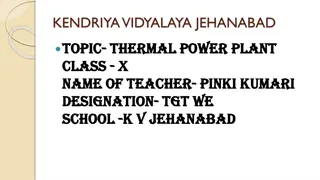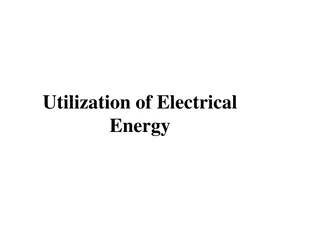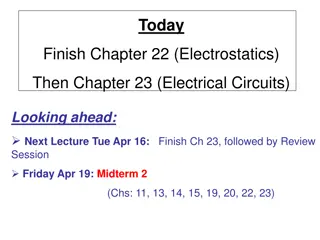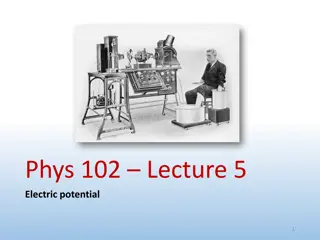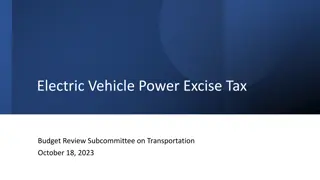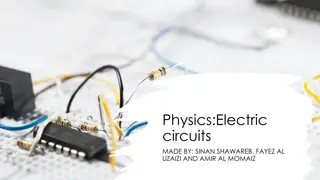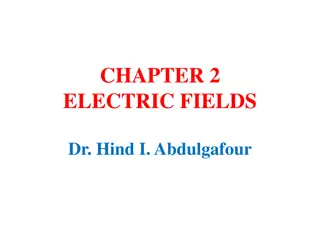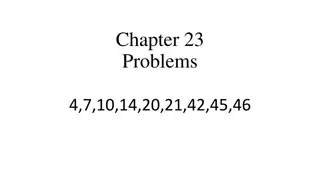Overview of Electric Power Plants
Explore the functioning of various electric power plants including nuclear, fossil fuel thermal, hydroelectric, wind, solar, geothermal, biomass, and ocean power plants. Understand the processes involved in generating electricity from different energy sources such as fission, combustion, steam generation, turbine rotation, and electricity generation.
Download Presentation

Please find below an Image/Link to download the presentation.
The content on the website is provided AS IS for your information and personal use only. It may not be sold, licensed, or shared on other websites without obtaining consent from the author.If you encounter any issues during the download, it is possible that the publisher has removed the file from their server.
You are allowed to download the files provided on this website for personal or commercial use, subject to the condition that they are used lawfully. All files are the property of their respective owners.
The content on the website is provided AS IS for your information and personal use only. It may not be sold, licensed, or shared on other websites without obtaining consent from the author.
E N D
Presentation Transcript
CHAPTER 8 (BEE) ELECTRIC POWER PLANTS GPES MANESAR (ECE DEPTT.)
INDEX Conventional electric power plants -Nuclear power plants -Fossil fuel thermal power plants -Hydroelectric power plants Non-conventional electic power plants -Wind power plants and wind farms -Solar power plants -Geothermal power plants -Biomass thermal power plants -Ocean power plants
NUCLEAR POWER PLANT The nuclear power plants are specials thermoelectric powerplant. Althught they are thermoelectric power plants, they don't produce heat by burning fossil fuels, such as coal,or oil,so they produce energy by fission of Uranium or Plutonium atoms . The structure is formed by a contaiment building at the backrground,that is where The nuclear fission take place.
How doesnuclear power station function ?
The reactor is where fission take place.The uranium is placed in very thin rods about 4 m long know as fossil rods Control rods regulate the power produced by the reactor and can be raised and lower. Water is pumped around the reactor. This water is used to refrigerate the reactor. The primary circuit: water enters a steam generator. Then it flows back to reactor. The water in the secondary circuit is transformed into steam, that moves turbines and collect the energy that it produce in the collector connectated to the turbine.
Fossil fuel thermal power plants A fossil-fuel power station is a type of power station that burns fossil fuels such as coal to produce electricity. Fossil fuel power stations have machinery that transforms the heat energy of combustion into mechanical energy, which then operates an electrical generator.
How doesthermal power stations function?
Steps to transform certains materials such as coal, in thermal power stations: 1st step: Coal is burned in to the boiler to produce heat. 2nd step: Thermodinamyc process consist of: -The heat produce by burning fossil fuel materials boils water and transform it into steam. -The steam is then piped to a turbine. -The impulses of turbine moves the turbine. -Finally, steam is condensed and move into the boiler to repeat the cycle. 3rd step: Rotation of the turbine rotates the generator to produce electricity.
Hydroelectric power plants The hydroelectric power plants are stations where energy is produced by the force of falling water. The water moves a turbine connected to a generator that collect the energy that water creates.
Non-conventional electic power plants -Wind power plants and wind farms Wind stations are the ones that transform wind energy into another usefull kind of energy. A wind farm consist of almost a hundred of winds turbines connected to electric power transmission network. Parts of turbines; Rotor blades: Captures wind energy. Shaft: Channelizes the energy to a generator. Generator: Collect energy.
Solar power plants. That kind of power plants creates energy by transforming the heat and light from the sun. There are two types; -Solar thermal energy: It stores the heat of the sun, which transform water into steam, that moves turbines which are connected to a generator that collect energy. - Photovoltaic energy: Is a method of generating electrical power by converting solar radiation into direct current electricity.
Geothermal power plants The geothermal power plants are plants where energy is created by the earth's interior heat. Geothermal power is cost effective, reliable, sustainable, and environmentally friendly, but has historically been limited to areas near tectonic plate boundaries. Geothermal electric plants were traditionally built exclusively on the edges of tectonic plates where high temperature geothermal resources are available near the surface.
Biomass thermal power plant The biomass thermal energy consist in burning the natural waste and rubish, such as plants, animals, food... It produces natural gases that provides heat to water, and wich transforms it into steam, that later will move a turbine connected toa generator that collects energy.
Ocean power plants The ocean power plants produce energy by ocean waves movements. That movements move a turbine connected with a generator that stores that energy. The waves are produce by the wind in contact with surface. If the waves move slow, the energy will be lower than if the waves are faster.
Enviromental impacts Conventional enery impacts: - Fossil-fuels thermal power plants: Athmosferic pollution from gas combustion - Nuclear power plants: Danger of radiation and contamination. - Hydroelectric power plants: Produces changes in the enviroment. Non-Conventional enery impacts: -Wind power: Visual and sound impact. -Solar power:Affecfs ecosystems as it covers large areas. -Ocean power: Envirometal changes resulting from required construction work.
